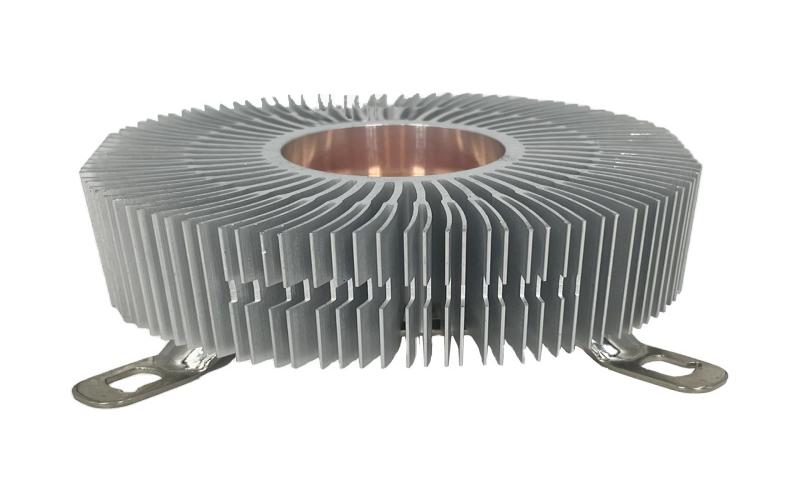Introduction: Understanding the Role of Round LED Heatsinks
LED lighting has become increasingly popular in recent years due to its energy efficiency and long lifespan. However, one of the key challenges of LED lighting is managing the heat generated by the diodes. This is where round LED heatsinks come into play. These essential components not only help dissipate heat effectively but also ensure the longevity and performance of LED lights. In this article, we will explore the importance of round LED heatsinks and their various aspects.
The Basics: What Are Round LED Heatsinks?
Round LED heatsinks are specialized devices designed to absorb and dissipate heat generated by LED diodes. They are typically made of materials with high thermal conductivity, such as aluminum or copper, which efficiently transfer heat away from the LED diodes. The round shape of these heatsinks allows for a larger surface area, ensuring better heat dissipation.
The Significance of Efficient Heat Dissipation in LED Lighting
Efficient heat dissipation is crucial for the optimal performance and longevity of LED lighting systems. When LED diodes operate at high temperatures, they experience a decrease in efficiency and can even suffer permanent damage. Round LED heatsinks play a vital role in maintaining the diodes' temperature within an acceptable range, ensuring consistent performance and extending the lifespan of LED lights.
Enhanced Thermal Management: How Round LED Heatsinks Work
Round LED heatsinks work by absorbing the heat generated by the LED diodes and transferring it to the surrounding environment. The heatsink's design maximizes the surface area in contact with the air, promoting efficient heat dissipation through convection. The round shape allows for better airflow and enhances the natural cooling process, keeping the LED diodes at optimal temperatures.
Choosing the Right Material: Aluminum vs. Copper Round LED Heatsinks
When selecting round LED heatsinks, two common material choices are aluminum and copper. Both materials have excellent thermal conductivity properties, but there are some differences to consider. Aluminum heatsinks are lightweight, cost-effective, and offer sufficient thermal performance for most LED applications. On the other hand, copper heatsinks have higher thermal conductivity and are more suitable for high-power LED systems or applications where maximum heat dissipation is required.
Factors to Consider in Round LED Heatsink Design
The design of round LED heatsinks plays a crucial role in their effectiveness. Several factors need to be considered, including the size and shape of the heatsink, the number and arrangement of fins, and the overall surface area. A well-designed heatsink ensures optimal heat dissipation, preventing thermal issues and maintaining LED performance.
Installation Considerations: Mounting Round LED Heatsinks
Proper installation of round LED heatsinks is essential to maximize their effectiveness. The heatsinks should be securely mounted to the LED diodes using thermal adhesive or screws to ensure optimal thermal contact. It is also important to consider the positioning of the heatsinks to allow for adequate airflow and prevent any obstructions that could hinder heat dissipation.
Round LED Heatsinks and Energy Efficiency
Round LED heatsinks not only contribute to the performance and longevity of LED lights but also play a role in energy efficiency. By effectively dissipating heat, these heatsinks help reduce the operating temperature of LED diodes, which in turn lowers the energy consumption of the lighting system. This makes round LED heatsinks an essential component for sustainable and energy-efficient lighting solutions.
Applications of Round LED Heatsinks
Round LED heatsinks find applications in various industries and settings. They are commonly used in residential and commercial lighting fixtures, automotive lighting, horticultural lighting, and even in electronic devices where LED indicators are employed. The versatility and effectiveness of round LED heatsinks make them an integral part of modern LED lighting technologies.
The Future of Round LED Heatsinks
As LED lighting continues to gain popularity and advancements in technology emerge, the role of round LED heatsinks will become even more significant. Research and development efforts are focused on improving heat dissipation capabilities, exploring new materials, and optimizing heatsink designs to meet the evolving demands of LED lighting systems. The future holds promising innovations that will further enhance the performance and efficiency of round LED heatsinks.

